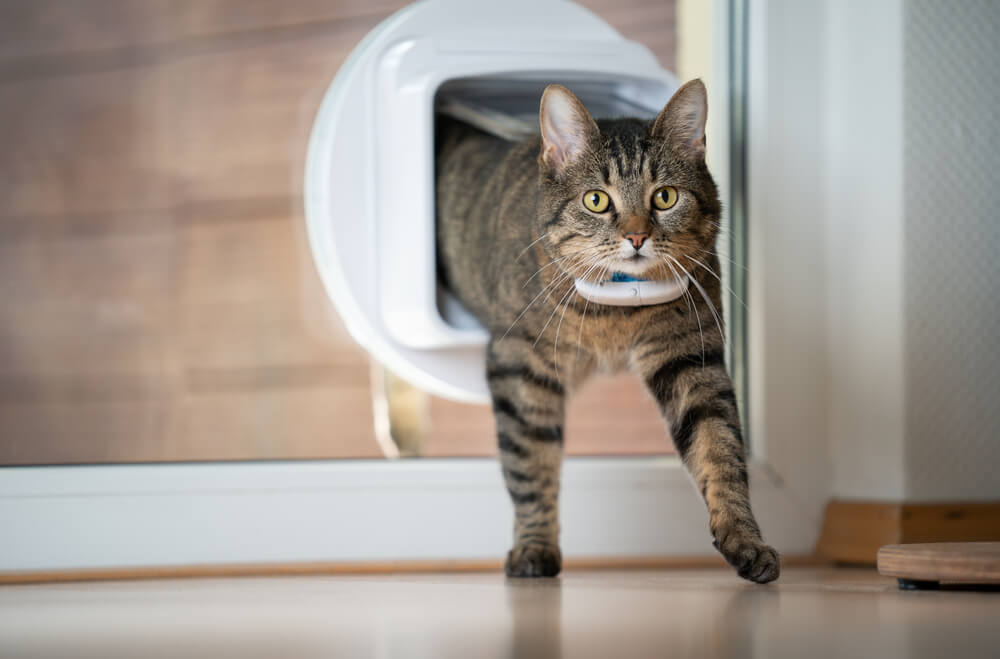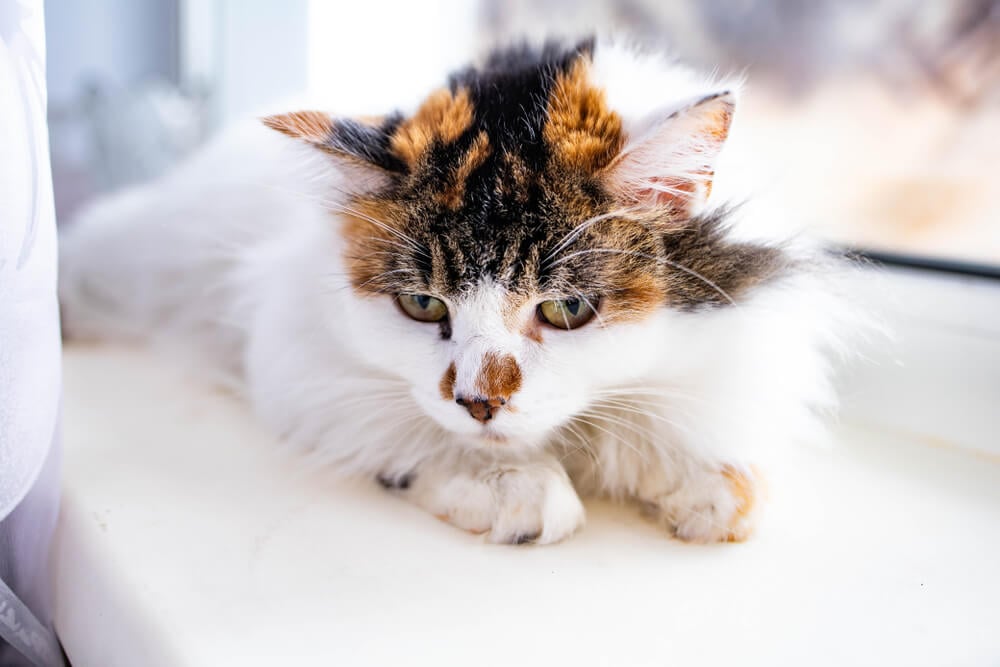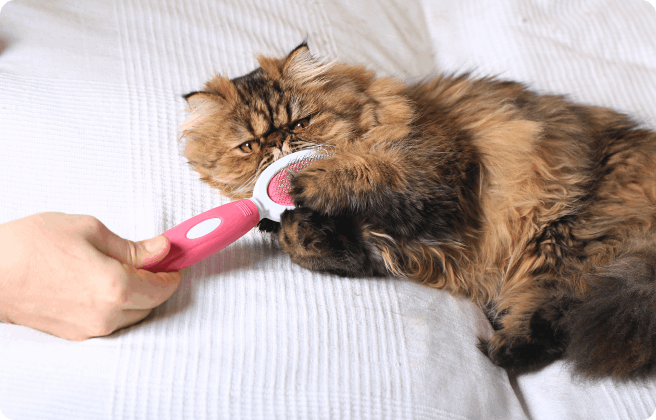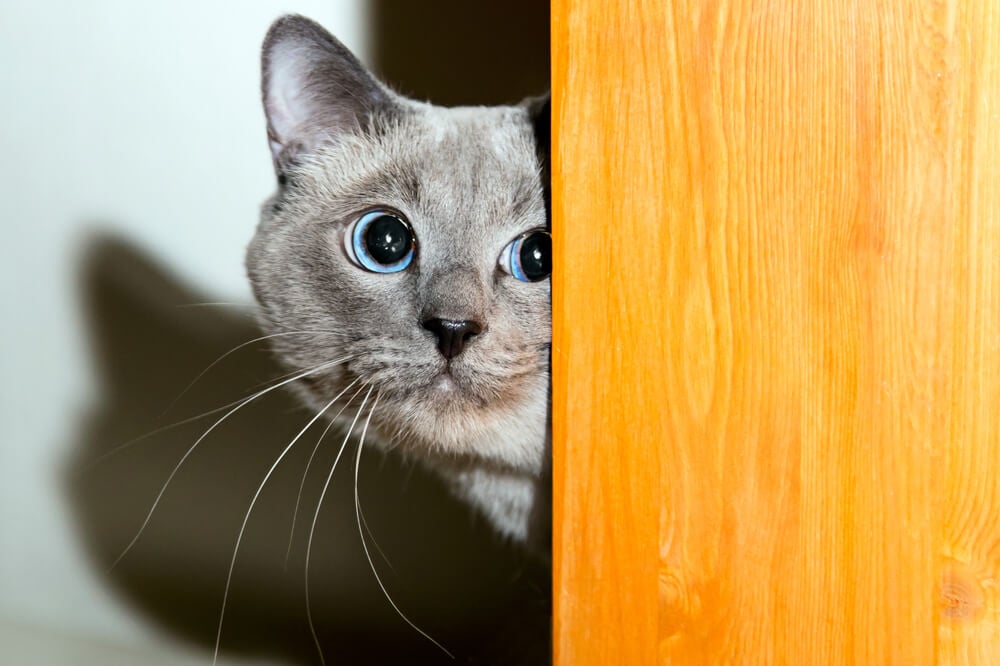
Bringing a new cat into your home can be exciting, but when you’re adding other animals into the mix, things can be more difficult. It’s important to introduce pets slowly, as rushing first introductions could cause your pets to become stressed or frightened. Introducing a new cat to existing pets can take days or even months. Each animal is different.
It is also hard to repair the trust or bond between your cat and other pets once it is broken, so getting it right the first time is crucial.
The best way to introduce a new cat to another pet is:
- Prepare a safe space at home
- Take things slowly
- Use scents
- Use a crate or pen
- Monitor the situation
Prepare a safe space at home
This is the first and most important stage of introducing a new cat to your home. Dedicate a room for your new cat which is separated from your existing pet’s living space. Set up a sleeping area, a hiding space such as a crate or carrier box, a water bowl, food bowl, and a litter box.
You could also try a plug-in diffuser which could help to lower stress levels.
Take things slowly
Moving too fast will scare all animals involved so patience is key. Avoid contact with other animals on the day you bring your new cat home, instead take it to the safe space you have created and shut the door. Put the carrier box in a corner of the room and open the door but do not force the cat to come out. Wait for your new cat to come out of the carrier independently which might only happen if you leave the room.
When you do eventually introduce your pets, make sure the house is calm and quiet. Avoid parties, seasonal celebrations, and visiting friends or family. Your pets need to get used to each other before being introduced to new humans.
The process of scent familiarization can take anything from a few hours up to a few months. Read on to learn how to use scents for introducing new cats.
Use scents
Cats use scents for communicating with other cats and find their own scent comforting. On your way home with your new cat for the first time, put a blanket or something they have been sleeping on into the carrier box. This will make them feel safe.
Once your new cat is comfortable and feeling calm, swap the scented blanket or bedding in their carrier box with one which has your existing cat’s scent on. Put the new cat blanket into the living area of your existing cat. This will give them the chance to ‘meet’ each other by smell. If your cats start to spit, hiss, or avoid the blanket, move it further away from their bed or food bowl and place it closer and closer each day. Once they are familiar with each other’s scent you can start the next stage of introductions — visual.
You can also try swapping food bowls to create a positive link between eating and the other cat’s scent. Ask your vet before doing this if one or both of the cats are on a special diet or are ill.
Use a crate or play pen
Before your new cat meets your existing pets, you want to make sure it can ‘eye up the competition’ so to speak, with a visual introduction. This is where there is no pressure for your cat to interact with the resident animals and no opportunity for a confrontation or chase to occur.
Using a kitten pen, puppy pen or large dog crate is ideal as it separates your animals but still provides the chance for them to see and smell each other. The pen should be big enough for your cat to stand up and move around in. You should also create a hiding space in the pen and a platform for them to retreat to if scared. A cardboard box or cat carrier will provide both of these spaces. You could also place a blanket over the pen to create more security and use treats or toys to reinforce a positive experience. Do not use catnip.
When your cat begins to play through or rub against the crate door, it is a good sign that you can remove the crate or pen barrier. Look out for growling, hissing, or spitting.
Monitor the situation
Even if your cat seems ready initially, they could soon become uncomfortable when the barrier is removed. Carefully watch for anxious or aggressive behavior and halt any fighting with a clap or loud noise. Give your cat the chance to explore the whole room and climb on things which might make it feel safer.
Do not force the animals to interact with each other and keep dogs on a lead or ask them to sit. Praise all animals involved and reward them for good behavior. If at any point, your new cat or existing pets become too excited, remove them from the room. Do not give your dog or existing pets the chance to chase your new cat as this could break their trust. When you are happy that all animals are comfortable with each other, you can gradually widen the face-to-face meeting area to other rooms of the house and let them find their own living and sleeping routine.
Negative behavior to look out for when introducing a new cat:
- Prolonged fighting
- Bullying such as guarding of food bowls
- Loss of appetite
- Your new cat not using the litter box
- Prolonged hiding
- Spraying
The biggest thing to remember is that introducing a new cat to existing pets will take time and patience. If not done slowly, you could cause unnecessary stress to your pets and potential behavioral issues. Never leave your new cat and existing pets unattended in the same room unless you are completely confident that they are comfortable and safe in each others company.
We uphold the highest editorial standards when creating the authoritative content pet parents rely on and trust.
Every piece of clinical content on the Cat Food Advisor is reviewed by our certified Veterinary Advisory Board, which consists of licensed veterinarians and medically certified specialists.
Our reviews are completely independent; we are not paid by any pet food company to promote their products favorably. We do not accept money, gifts, samples or other incentives in exchange for special consideration. For more information see our Disclaimer & Disclosure page.










